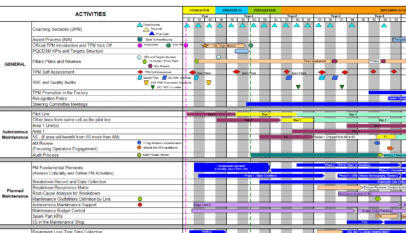Here are three simple steps that can help improve change management within an organization:
- Communicate effectively: The reasons for the change, its benefits, and the resources and support available to help employees through the transition.
- Effective communication is essential for successful change management. Here are a few tips for communicating effectively during the change process:
- Use multiple channels: Use a variety of channels, such as email, meetings, webinars, and social media, to reach all employees and stakeholders.
- Be transparent: Be open and honest about the reasons for the change, its benefits, and any challenges that may arise.
- Listen and respond: Encourage feedback and be responsive to questions and concerns.
- Keep the message consistent: Ensure all communication about the change is consistent and accurate.
- Provide support: Offer resources and support to help employees and stakeholders through the transition.
- Involve stakeholders: Engage key stakeholders, including employees, customers, and other key groups, in the change management process. This can help build support for the change and ensure all necessary perspectives are considered.
- Identify critical stakeholders: Determine who the key stakeholders are, including employees, customers, partners, and any other groups that may be affected by the change.
- Involve stakeholders in the planning process: Engage stakeholders in the planning process to ensure that their needs and concerns are considered. This could include holding meetings or workshops or conducting surveys or focus groups.
- Provide ongoing support: Offer ongoing support and resources to help stakeholders adapt to the change.
- Plan and execute carefully: Develop a comprehensive plan for implementing the change, including clear milestones and a timeline for achieving them. Execute the plan carefully, being mindful of any potential risks or challenges that may arise.
- Identify the need for change: Determine why it is necessary, and assess its potential impact on the organization.
- Develop a plan: Create a detailed plan that outlines the steps required to implement the change, including timelines, resources, and budget.
- Communicate the plan: Share the change management plan with all relevant stakeholders, including employees, management, and other impacted parties.
- Implement the change: Put the plan into action, following the steps outlined in the plan.
- Monitor and review: Keep track of the progress of the change and make any necessary adjustments as needed. Review the results of the change to determine its effectiveness and identify any areas for improvement.
- It is essential to involve all relevant stakeholders in the change management process, as their buy-in and support are crucial to the success of the change. It is also essential to have a clear and effective communication plan to ensure that everyone understands the changes and their role in the process. Finally, it is essential to have contingency plans in place in case the change does not go as planned.
Organizations can better manage change by following these steps and ensuring a smooth transition to new processes, systems, or working methods.


















